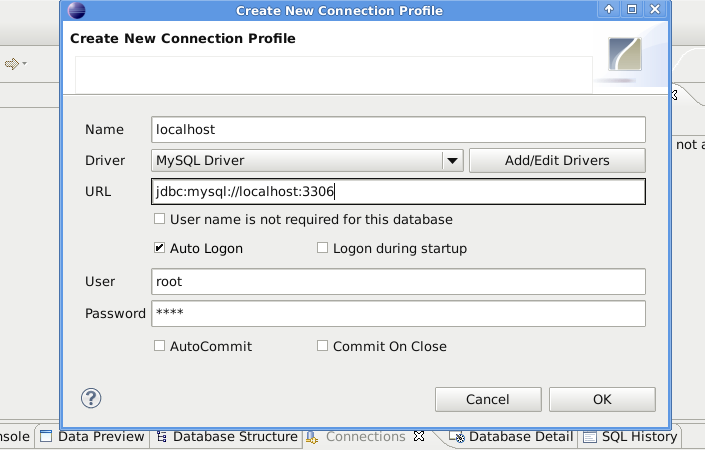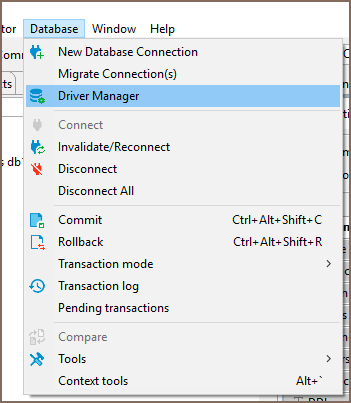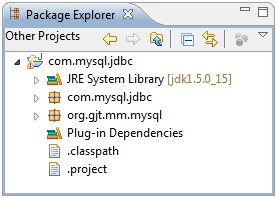

- #HOW TO INSTALL JDBC DRIVER FOR MYSQL UBUNTU HOW TO#
- #HOW TO INSTALL JDBC DRIVER FOR MYSQL UBUNTU DRIVERS#
- #HOW TO INSTALL JDBC DRIVER FOR MYSQL UBUNTU FULL#
Generate a PowerBI report using MySQL ODBC driverĪt this stage, we are going to create a PowerBI report using the MySQL ODBC driver. On the initial screen, you see the list of MySQL software installed on the computer. Once the process is complete, open the installer.



#HOW TO INSTALL JDBC DRIVER FOR MYSQL UBUNTU DRIVERS#
We’ll also install ODBC drivers from the MySQL Community installer (available for download here). Using MySQL community installer, you can view, install, update, configure, and remove various MySQL products. Official MySQL documentation also provides instructions on installing on any other supported OS. This article will focus on installing ODBC drivers on Windows OS.
SUSE Enterprise Linux, versions 12 – 15. Canonical – Ubuntu, versions 18.04 – 21.04. Oracle Linux / Red Hat / CentOS, versions 6 – 8. #HOW TO INSTALL JDBC DRIVER FOR MYSQL UBUNTU FULL#
The full list of currently supported platforms is below: The developers continually track all the new OS versions to make sure that MySQL in general and ODBC, in particular, will be compatible with them. It works on all platforms that MySQL supports – Windows, Unix-like OS, and macOS.
Creating a basic list report with PowerBI that uses the ODBC driver for the data population from the MySQL database.Ĭonnector/ODBC is a universal cross-platform solution. Configuring the ODBC data source with ODBC driver for MySQL. Installing the ODBC driver on Windows 10. In particular, it will cover the following issues: List result = session.createQuery("from Person", Person.class).This article focuses on the step-by-step processes of installing and configuring the ODBC driver for MySQL. Now that we have our connection set up, we can run a query to select all the people from our person table: Session session = sessionFactory.openSession() SessionFactory = new MetadataSources(registry).buildMetadata().buildSessionFactory() StandardServiceRegistry registry = new StandardServiceRegistryBuilder().configure().build() Typically, this only needs to be set up once for an application: SessionFactory sessionFactory Once we complete the configuration, we'll use the SessionFactory class, which is the class responsible for creating and pooling JDBC connections. As we're focussing on MySQL in this article, we'll stick with the MySQL5Dialect dialect.įinally, Hibernate also needs to know the fully-qualified name of the entity class via the mapping tag. Hibernate ships with more than 40 SQL dialects. This property is used by the framework to correctly convert Hibernate Query Language (HQL) statements into the appropriate SQL for our given database. Apart from the standard connection properties, it is worth mentioning the dialect property which allows us to specify the name of the SQL dialect for the database. Hibernate has many configuration properties. Jdbc:mysql://localhost:3306/test?serverTimezone=UTC Let's go ahead and define the Person class: = "Person")Īnother essential aspect is to create the Hibernate resource file, typically named, where we'll define configuration information: Hibernate requires that an entity class must be created for each table. #HOW TO INSTALL JDBC DRIVER FOR MYSQL UBUNTU HOW TO#
In this section, we'll see how to use Hibernate to manage a JDBC connection to our database.įirst, we need to add the hibernate-coreMaven dependency:








 0 kommentar(er)
0 kommentar(er)
